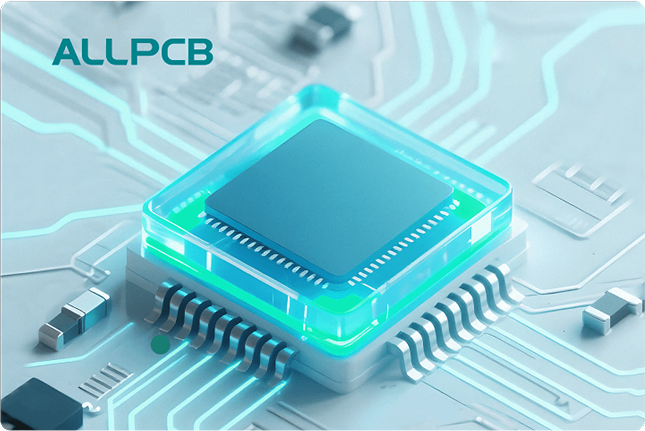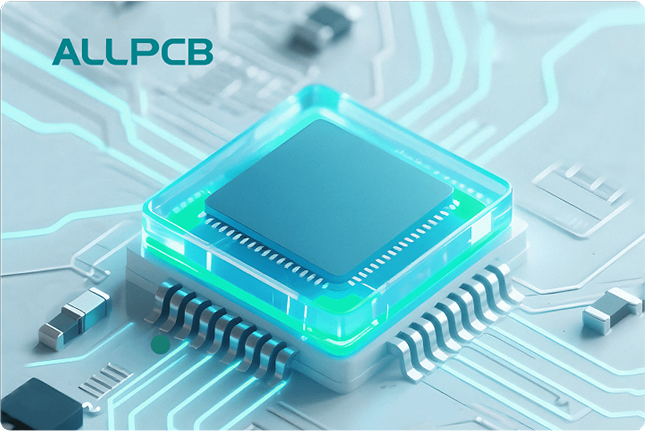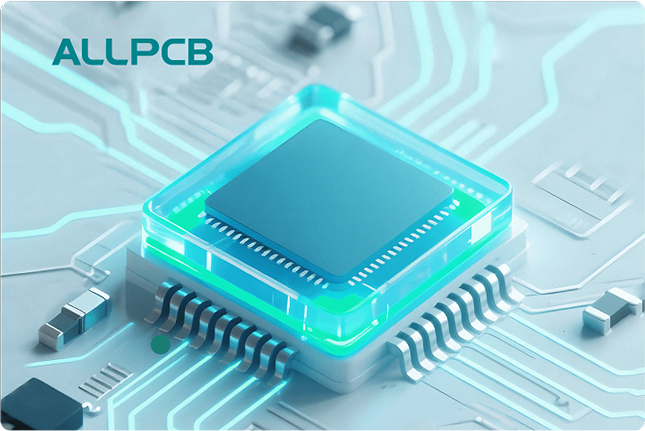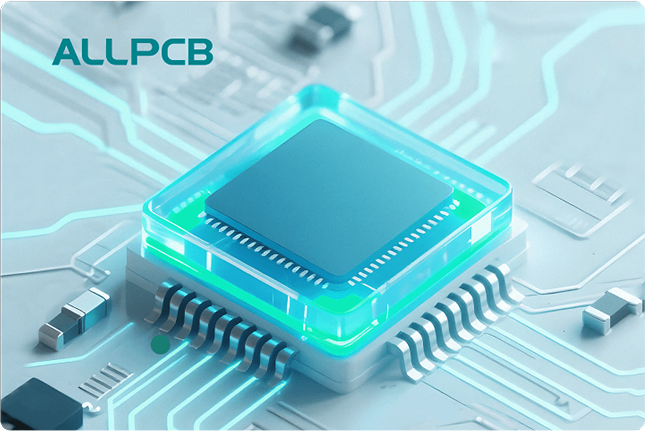In the fast-paced world of electronics manufacturing, maintaining the cleanliness of printed circuit boards (PCBs) is critical, especially for high-density assemblies. If you're searching for effective ways to clean PCBs during assembly, ultrasonic cleaning agents offer a powerful solution. This blog explores how ultrasonic cleaning enhances PCB cleanliness, focusing on the process, the best solutions for electronics, and tips for flux removal. Whether you're dealing with intricate designs or sensitive components, ultrasonic cleaning can ensure reliability and performance in your assemblies.
At ALLPCB, we understand the importance of precision and quality in every step of PCB production. Let's dive into the details of ultrasonic cleaning for PCB assembly, breaking down the process and highlighting its benefits for high-density electronics.
What Is Ultrasonic Cleaning for PCB Assembly?
Ultrasonic cleaning is a process that uses high-frequency sound waves to remove contaminants from surfaces like PCBs. These sound waves create tiny bubbles in a liquid cleaning solution through a process called cavitation. When these bubbles collapse, they produce powerful micro-jets that dislodge dirt, flux residues, and other particles from even the smallest crevices of a PCB.
For high-density assemblies, where components are tightly packed and spaces are minimal, traditional cleaning methods like manual brushing or solvent wiping often fall short. Ultrasonic cleaning, however, penetrates hard-to-reach areas without damaging delicate components, making it ideal for modern electronics. This method is widely used in industries such as aerospace, automotive, and medical device manufacturing, where precision and reliability are non-negotiable.
Why Use Ultrasonic Cleaning in PCB Assembly?
PCBs, especially high-density ones, are prone to contamination during manufacturing and assembly. Residues like flux, solder paste, dust, and fingerprints can lead to issues such as short circuits, corrosion, or reduced performance. Ultrasonic cleaning offers several advantages over other methods:
- Efficiency: It cleans multiple boards simultaneously, saving time in large-scale production.
- Precision: The cavitation process reaches tiny gaps and under components where manual cleaning can't go.
- Non-Destructive: When done correctly, it avoids damaging sensitive parts, unlike harsh mechanical scrubbing.
- Environmentally Friendly: Many ultrasonic cleaning solutions are water-based and biodegradable, reducing the use of harmful chemicals.
Studies have shown that ultrasonic cleaning can remove up to 99% of contaminants from PCB surfaces when paired with the right cleaning agent, compared to only 70-80% with manual methods. This high level of cleanliness is crucial for ensuring signal integrity in high-frequency circuits, where even a small residue can increase impedance by 10-15% or more.
The Ultrasonic Cleaning Process for PCBs
Understanding the ultrasonic cleaning process is key to achieving optimal results in PCB assembly. Here's a step-by-step breakdown of how it works:
- Preparation: Remove any loose debris from the PCB using compressed air or a soft brush. Ensure the board is compatible with ultrasonic cleaning by checking for sensitive components that might be damaged by vibrations (e.g., certain quartz crystals or MEMS devices).
- Choosing the Solution: Select a cleaning agent suitable for electronics. Water-based solutions with mild detergents are often used for flux removal, while specialized solvents may be needed for stubborn residues.
- Setup: Place the PCB in the ultrasonic cleaner's tank, ensuring it is fully submerged in the cleaning solution. Avoid stacking boards to allow sound waves to reach all surfaces.
- Cleaning: Set the cleaner to the appropriate frequency (typically 25-40 kHz for PCBs) and temperature (around 40-60°C). Run the cycle for 5-10 minutes, depending on the level of contamination.
- Rinsing: After cleaning, rinse the PCB with deionized water to remove any leftover solution. This step prevents residue buildup that could affect performance.
- Drying: Use a drying oven or compressed air to remove moisture. Ensure the board is completely dry to avoid corrosion or electrical issues.
The frequency and power settings are critical in this process. For instance, a frequency of 25 kHz generates larger cavitation bubbles for heavy contamination, while 40 kHz is better for delicate components due to smaller, gentler bubbles. Adjusting these parameters ensures effective cleaning without risking damage to the PCB.
Best Ultrasonic Cleaning Solutions for Electronics
Finding the best ultrasonic cleaning solution for electronics depends on the type of contaminants and the materials on your PCB. Not all solutions are created equal, and using the wrong one can lead to residue buildup or component damage. Here are some common types of cleaning agents used in PCB assembly:
- Water-Based Detergents: These are mildly alkaline or neutral solutions designed for general-purpose cleaning. They are effective for removing flux residues and organic contaminants. Many are biodegradable and safe for electronics when rinsed properly.
- Isopropyl Alcohol (IPA) Mixtures: IPA diluted with deionized water (typically 70-90% IPA) is excellent for dissolving rosin-based flux. However, it must be used with caution as it can damage certain plastics or coatings.
- Specialized Electronics Cleaners: These are formulated specifically for ultrasonic cleaning of PCBs. They often have low surface tension to penetrate tight spaces and are non-conductive to prevent electrical issues.
For high-density assemblies, a water-based solution with a pH between 7 and 10 is often recommended. These solutions minimize the risk of etching sensitive metals like copper traces, which can degrade by 5-10 micrometers if exposed to overly acidic or alkaline agents. Always test a small area of the PCB before full cleaning to ensure compatibility.
Additionally, maintaining the cleaning solution is vital. Replace it after every 8-10 cycles or when it appears visibly dirty, as degraded solutions lose effectiveness and may redeposit contaminants onto the PCB.
Ultrasonic Cleaner for PCB Flux Removal
Flux residues are one of the most common contaminants in PCB assembly, and using an ultrasonic cleaner for PCB flux removal is a game-changer. Flux, used during soldering to prevent oxidation, often leaves sticky residues that attract dust and moisture, leading to potential failures. Ultrasonic cleaning tackles this issue efficiently.
Rosin-based flux, commonly used in electronics, can be particularly stubborn. A combination of a water-based detergent and ultrasonic cleaning at 40 kHz for 5-7 minutes can remove up to 98% of rosin residues, as reported in industry studies. For no-clean flux, which is designed to remain on the board, cleaning might not always be necessary unless aesthetic or reliability concerns arise.
One key tip for flux removal is to clean the PCB as soon as possible after soldering. Fresh flux is easier to remove, while hardened residues may require longer cleaning times or stronger solutions. Be cautious with temperature settings, as overheating (above 60°C) can bake flux onto the board, making it harder to clean.
Benefits of Ultrasonic Cleaning for High-Density Assemblies
High-density PCB assemblies, with their tightly packed components and fine-pitch traces, present unique cleaning challenges. Ultrasonic cleaning stands out as the preferred method for several reasons:
- Improved Signal Integrity: Removing contaminants ensures that high-frequency signals (often above 1 GHz in modern designs) travel without interference. Even a 1% increase in impedance due to residue can degrade performance in such systems.
- Enhanced Reliability: Clean boards are less prone to corrosion or dendritic growth, which can cause shorts over time, especially in humid environments.
- Consistency: Ultrasonic cleaning delivers uniform results across complex geometries, unlike manual methods that may miss spots under components like BGAs or QFNs.
In high-density designs, where trace widths can be as small as 0.1 mm, even microscopic particles can cause significant issues. Ultrasonic cleaning reduces defect rates by ensuring thorough contaminant removal, which is critical for applications like 5G devices or medical electronics.
Precautions and Best Practices for Ultrasonic Cleaning
While ultrasonic cleaning is highly effective, it must be done with care to avoid damaging PCBs. Here are some best practices to follow:
- Check Component Compatibility: Some components, like piezoelectric devices or certain capacitors, can be damaged by ultrasonic vibrations. Always refer to component datasheets or test on a sample board.
- Use Proper Frequency: Stick to 25-40 kHz for most PCBs. Higher frequencies (above 80 kHz) may be too gentle for tough residues, while lower frequencies (below 20 kHz) can be too aggressive.
- Avoid Overloading the Tank: Place boards in a way that allows sound waves to reach all areas. Overcrowding reduces cleaning efficiency.
- Monitor Solution Temperature: Keep temperatures below 60°C to prevent damage to components or coatings. For most cleaning agents, 40-50°C is optimal.
- Rinse Thoroughly: Residual cleaning solution can cause conductivity issues if not rinsed off. Use deionized water for the final rinse to avoid mineral deposits.
Following these guidelines minimizes risks and maximizes the benefits of ultrasonic cleaning for your PCB assemblies.
Challenges and Limitations of Ultrasonic Cleaning
Despite its advantages, ultrasonic cleaning isn't a one-size-fits-all solution. Certain challenges must be considered:
- Component Damage Risk: As mentioned, some components are sensitive to vibrations or cavitation. For instance, frequencies below 20 kHz can resonate with quartz crystals, causing micro-cracks.
- Cost of Equipment: High-quality ultrasonic cleaners can be expensive, with industrial models costing thousands of dollars. However, the time and labor savings often justify the investment for large-scale operations.
- Solution Maintenance: Cleaning agents degrade over time and need regular replacement, adding to operational costs.
By understanding these limitations, manufacturers can make informed decisions about when and how to use ultrasonic cleaning for their specific needs.
How ALLPCB Supports Clean and Reliable PCB Assemblies
At ALLPCB, we prioritize quality at every stage of PCB production, including cleaning processes. Our advanced manufacturing facilities incorporate cutting-edge cleaning technologies to ensure that your high-density assemblies meet the highest standards of cleanliness and reliability. Whether you're working on consumer electronics, industrial controls, or medical devices, we provide tailored solutions to meet your needs.
We also offer guidance on post-assembly cleaning methods, helping you choose the right processes and solutions for your projects. Our commitment to excellence ensures that your PCBs perform optimally, even in the most demanding applications.
Conclusion
Ultrasonic cleaning agents play a vital role in enhancing PCB cleanliness, especially for high-density assemblies where precision is paramount. By leveraging the ultrasonic cleaning process, manufacturers can remove contaminants like flux residues efficiently, ensuring reliability and performance. Choosing the best ultrasonic cleaning solution for electronics and using an ultrasonic cleaner for PCB flux removal can significantly improve production outcomes.
As electronics continue to evolve with smaller, denser designs, methods like ultrasonic cleaning for PCB assembly will become even more essential. By following best practices and understanding the process, you can achieve spotless boards that meet the strictest quality standards. Trust in proven cleaning techniques and partner with experts like ALLPCB to take your PCB projects to the next level.
 ALLPCB
ALLPCB







